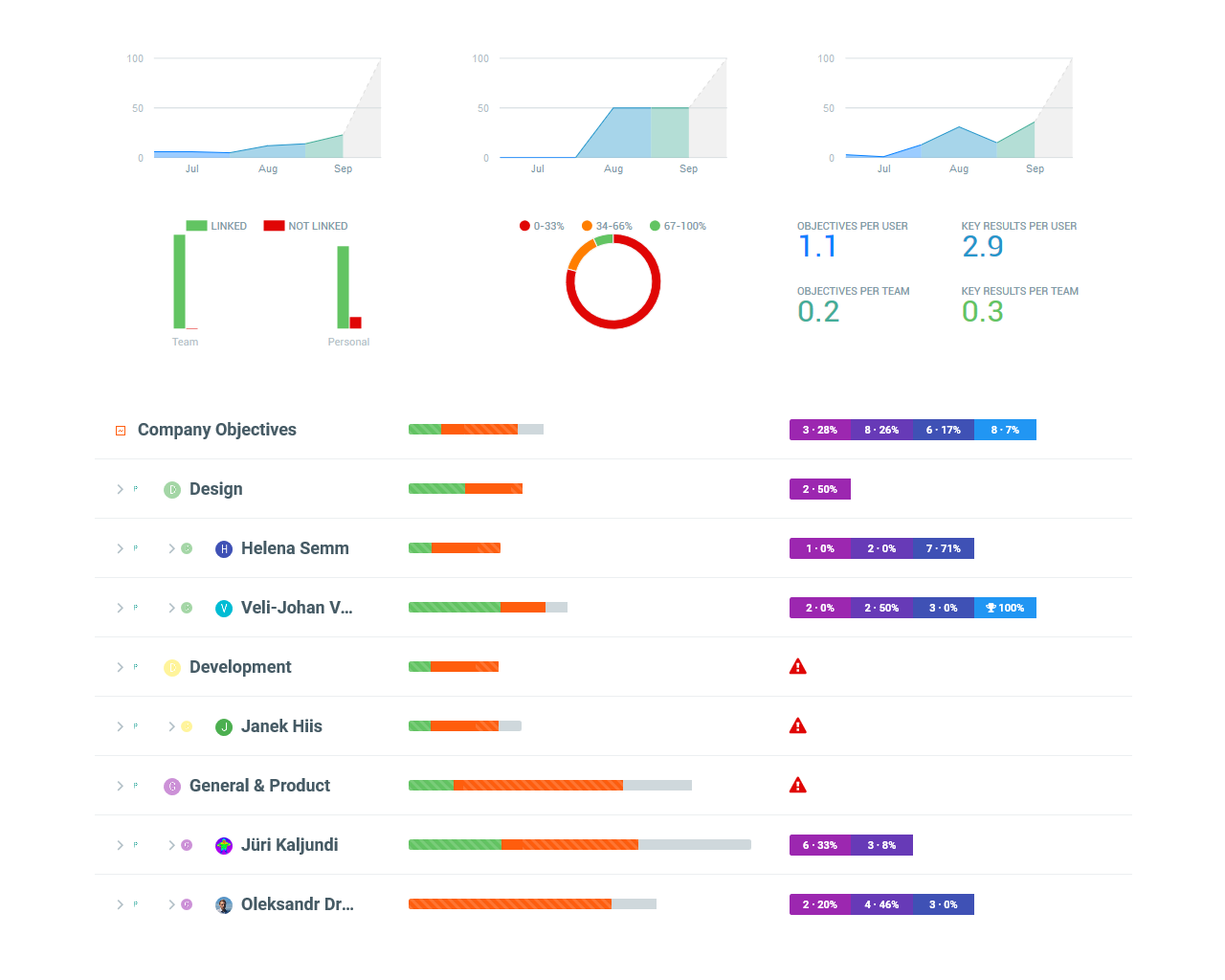
What is OKR?
Agile performance management model focused on results, OKRs serve as an internal communication tool: they integrate teams through the formulation of objectives related to mission, values and corporate strategy.
History

Problems OKRs aim to solve
-
Lack of alignment between the company, boards and teams;
-
Lack of focus of employees with their activities, aiming to maximize the company's results;
-
Little stimulation of productivity from challenging goals;
-
Lack of transparency between teams;
-
Difficulty of the collaborator to notice how their contributions impact on the company;
-
Lack of communication between teams and collaborators;

OKR Structure
Objective ("what do I want to achieve?")
Key Results ("how can I measure?")

OKR Levels
Organizational
Company OKRs
Departmental
OKRs of the teams
Individual
OKRs of the collaborators

OKR Features
Communication: Aligning company expectations with employees
Simplicity: Simple language, making communication clearer and more effective
Bottom-Up and Top-Down: generation of engagement and purpose for each employee through participation in the goal-setting process
Short cycles: Track progress and error correction faster, as well as regular updates to gain insight and insight
Stretch Goals: Goals that force the team out of the comfort zone and rethink how to work
Defining
"Objectives"
&
"Key Results"
OBJECTIVE: is your "DREAM".
What do you want to achieve?
The answer will be your objective.
Characteristics:
- Be qualitative
- Be aspirational (recommended)
- Have a deadline and responsible
- To be questioned by the team

KEY RESULTS:
It is the "Success Criteria" of the Objective.
Characteristics:
- Quantitative (required)
- Metrics - KPIs (recommend)
- They must be challenging, not impossible
- SMART (Specific + Measurable + Attainable + Relevant + Term)

Objective 1:
Dominate Latin America
Key Results:
- KR 1: Grow 20% in number of customers
- KR 2: Reach MRR of R $ 1 million
- KR 3: Have international sales of at least R $ 2 million
Objective 2:
Make our customers love us
Key Results:
- KR 1: Achieve NPS of 75 or higher (Zone of Excellence)
- KR 2: Reduce CHURN to < 3%
- KR 3: Lançar 2 atualizações de software por mês
OKR Example: Company
Objetivo 1: Ter uma base incrível de leads
Resultados-chave:
- KR 1: Aumentar visitas mensais da webpage em 30%
- KR 2: Ter 5 parcerias para link building
- KR 3: Bater a marca de 2000 Leads a partir de Busca Pag
Objetivo 2: Cansar a equipe de vendas
Resultados-chave:
-
KR 1: Gerar 500 oportunidades
-
KR 2: Alcançar 2000 Leads Qualificados
- KR 3: Converter 1,5% dos Visitantes (Q anterior) em clientes
Exemplos de OKR: Marketing


Thank you
Gabriel Engel
